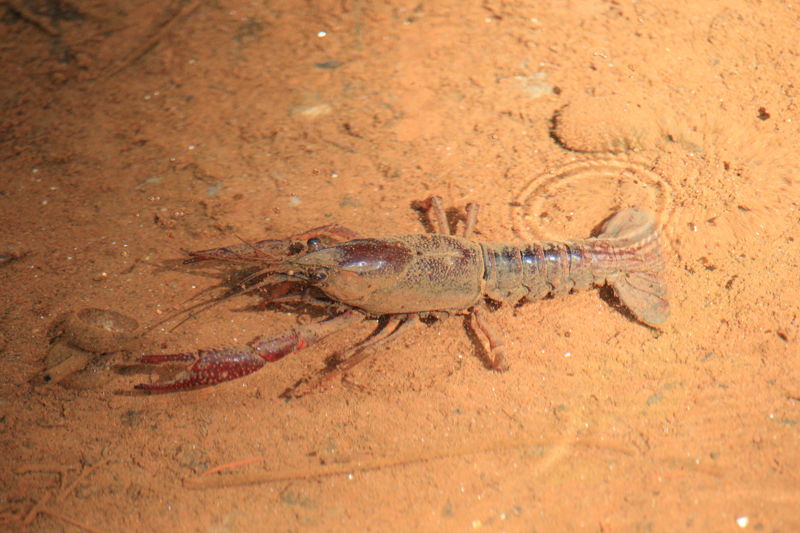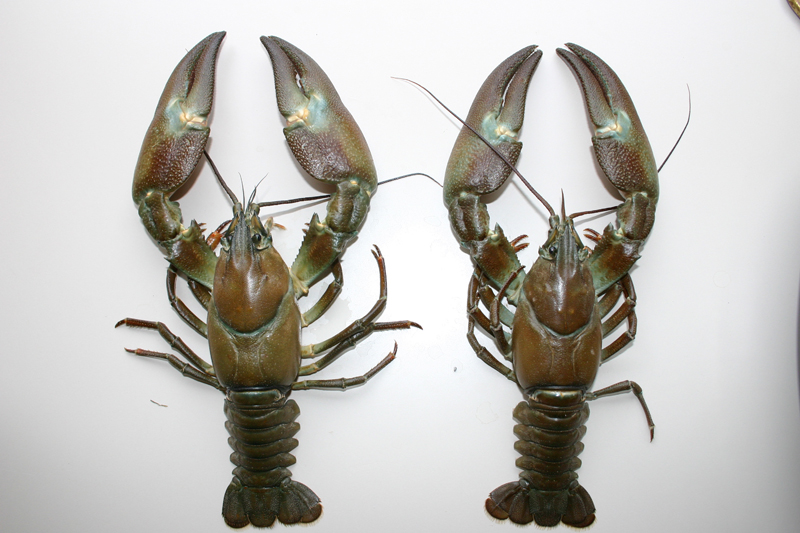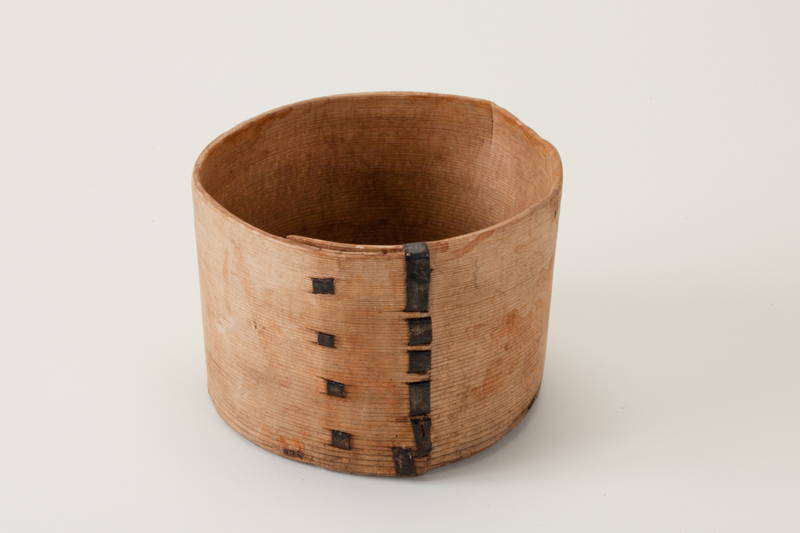
The endemic Japanese crayfish, the endemic species of Japanese crayfish, is currently breeding in Odate City! [Akita Prefecture]
table of contents
- 1 Japanese crayfish that live only north of Odate
- 2 American crayfish were imported from the United States for food and have bred in large numbers.
- 3 The Uchida crayfish is imported from Canada for food and is gradually expanding its range.
- 4 The Japanese crayfish is on the verge of extinction because it is attacked by American crayfish from the south and Uchida crayfish from the north.
- 5 Odate Folk Museum exhibits Odate City's historical heritage and traditional crafts, and promotes activities to protect natural monuments.
- 6 Magewappa was manufactured by the domain as a side job for samurai during the Edo period.
Japanese crayfish that live only north of Odate
The Japanese crayfish is a crayfish endemic to Japan that inhabits the clean, cool rivers and lakes of Hokkaido, Aomori, Iwate, and Akita prefectures.
Odate City is said to be the southern limit of the Japanese crayfish has been designated as a national natural monument (area) as a "crayfish habitat" is working on a restoration project to expand the crayfish habitat and increase the number of crawfish, and the project is currently on display at the Odate Folk Museum
Several Japanese crayfish habitats have been found in Odate City, but the locations have not been made public.

The Japanese crayfish was originally the only crayfish in Japan, so it was not called Japanese crayfish in ancient times, but simply called zarigani. In kanji, it is written as gravel crab A crayfish is a "crab that lives in gravel" (Wikipedia has a different story, so please refer to it).
American crayfish were imported from the United States for food and have bred in large numbers.

Around 1927, American crayfish were imported from New Orleans to Japan as food for bullfrog farming, where only Japanese crayfish existed.
Bullfrogs are also native to the United States, and were imported from the Taisho era to the early Showa era to alleviate food shortages, but they did not become popular as food, and farming ceased before the Pacific War.
The bullfrog farms were abandoned, and along with the remaining bullfrogs, the American crayfish also multiplied due to their strong reproductive power, eventually escaping the farms and expanding their range in the blink of an eye.

American crayfish are currently found throughout Japan, from Hokkaido to Okinawa. They are about 15 centimeters long, red or reddish-brown in color, and often live in freshwater rice fields and waterways, and can survive in any poor water quality.
In 2023, conditionally specified alien species , and it is prohibited to release them into ponds without permission, sell, distribute, purchase, or import them (keeping them at home or giving them away for free is prohibited. Not).
The Uchida crayfish is imported from Canada for food and is gradually expanding its range.

There is another type of invasive crayfish in Japan. This crayfish is called the Uchida crayfish and lives mainly in Hokkaido.
The Uchida crayfish is a crayfish that lives in Canada and the northern United States, and can grow up to 15 centimeters in length. It has a greenish brown color. It was imported by the Ministry of Agriculture, Forestry and Fisheries as food in 1926, and successfully cultivated in Lake Mashu, Hokkaido. However, it was not successful as a food source, and due to its high fertility and ferocity, it became wild and spread throughout Hokkaido.
The aggressive nature of frequent cannibalism poses a threat to Japanese crayfish and other aquatic animals native to Japan. In the 2000s, it was confirmed to be living in Chiba Prefecture, as well as in Fukushima, Tochigi, Nagano, and Shiga prefectures.

The Uchida crayfish is designated as a specified invasive species The American crayfish and Uchida crayfish are included in Japan's top 100 invasive alien species
The Japanese crayfish is on the verge of extinction because it is attacked by American crayfish from the south and Uchida crayfish from the north.

The body length of the Japanese crayfish is approximately 4 to 7 centimeters, and it is smaller than the American crayfish and Uchida crayfish, which can reach up to 15 centimeters, and has a rounded shell and less constricted body shape. The basic color is brown, but there are differences depending on the solid, and it may be difficult to distinguish it from other crayfish.
Japanese crayfish are very gentle and will not attack other crayfish. Moreover, their habitat is narrow, stretching from northern Tohoku to Hokkaido, and their reproductive ability is weak, so their habitat is invaded by aggressive alien species, putting them at risk of extinction. If you find a Japanese crayfish while strolling, please report it to the Odate Folk Museum
Odate Folk Museum exhibits Odate City's historical heritage and traditional crafts, and promotes activities to protect natural monuments.

The Odate Folk Museum, which continues to protect and breed Japanese crayfish , has a large collection of materials, historical heritage, and traditional folk crafts related to the Odate region's ancient history, agriculture, forestry, mining, and nature. This is a facility where you can exhibit and learn about some of them.

"magewappa", which is said to have originated in the Odate region , and there are many permanent exhibits including magewappa excavated from ruins from the Heian period, daily necessities, and works of art.
Magewappa was manufactured by the domain as a side job for samurai during the Edo period.

The Odate region the Shirakami production area, a World Heritage Site , and is home to a forest of natural Akita cedar as well as beech forests. It is said that the production of magewappa using Akita cedar began to flourish because the Satake Nishi family, the castle lords of Odate Castle in the Kubota domain (Akita domain), encouraged it as a side job for lower-ranking samurai during the Edo period. Masu.
Peel a thin layer of cedar bark, soak it in boiling water, bend it once it becomes soft, and then sew it with wild cherry bark to secure it firmly. Today, bento boxes are a typical product, but at the time, various daily necessities such as trays and ladles were made.

Magewappa, which has also been sung in Akita Ondo, was designated as a national traditional craft in 1980. Although it takes a little time, there is also a workshop in the city where you can try your hand at making magewappa. If you are interested, please contact the Odate Magewappa Cooperative Association The bento box takes about 90 minutes to make.
Odate Local Museum<Information>
- Facility name: Odate Folk Museum
- Address: 1 Shishigamori, Shakanai, Odate City, Akita Prefecture
- Phone number: 0186-43-7133
- Opening hours: 9:00-16:30
- Admission fee: 330 yen for adults, 220 yen for high school and university students, 110 yen for elementary and junior high school students, free for preschoolers
- Closed: Mondays (the next day if Monday is a public holiday) / December 29th to January 3rd
- URL: Odate Folk Museum
- access
- Railway/Approximately 10 minutes by bus from Odate Station on the Ou Main Line, approximately 3 minutes on foot from Shishigamori bus stop
- Car: Approximately 4 minutes from Akita Expressway Odate-kita IC
GOOGLE MAP
Odate Magewappa Cooperative <Information>
- Odate Magewappa Cooperative Association
- Location: 5A Nakamachi, Odate City, Akita Prefecture
- Phone number: 0186-49-5221
- URL: Odate Magewappa Cooperative Association



![Hot springs gush out in a place where there are no volcanoes! "Yuzawa Geopark" where you can see the mystery of the earth up close [Akita Prefecture] 4550228_m](https://jp.neft.asia/wp-content/uploads/2023/02/4550228_m-150x150.jpg)
![The popular game "Matagi" started in Kitaakita City! [Akita Prefecture] matagi](https://jp.neft.asia/wp-content/uploads/2024/04/matagi-150x150.jpg)
![Akita Cedar, which has been close to people's lives since ancient times, is a close look at the reasons and secrets [Akita Prefecture] Ninfu Mizusawa Cedar Rare Population Protection Forest (Noshiro City, Akita Prefecture)_Travel Tohoku](https://jp.neft.asia/wp-content/uploads/2025/05/792bcbe7d9fd514753f4deeaca3de33f-150x150.jpg)
![Yurihonjo City, where Honjo, Kameda and Yajima domains were intersected between the Kubota and Shonai domains [Akita Prefecture] FF2C8AAA4350E7E179F97F97B38B3A2302F-1](https://jp.neft.asia/wp-content/uploads/2024/04/ff2c8aaa4350e7e179f97f38b3a2302f-1-150x150.jpg)
![Why do Nama balds take knives to tempt people - Oga Peninsula and the Legend of the Demon (1) [Akita Prefecture] New Year's Eve Event 001 @OGA City](https://jp.neft.asia/wp-content/uploads/2024/10/00bf8a32651033edd1191ba2d04c6f61-150x150.jpg)
![A trip to Doroyu Onsen in Akita Prefecture, depicted in the 31st trip of the manga "That's Journey" [Akita Prefecture] 30422261_m](https://jp.neft.asia/wp-content/uploads/2025/11/30422261_m-150x150.jpg)
![The submerged forests of Lake Akiogi can only be seen from May to June! A mysterious sight with trees floating in the lake [Akita Prefecture] Submerged forest of Lake Akifan](https://jp.neft.asia/wp-content/uploads/2023/07/IMG_5033-150x150.jpg)
![[Chokaisan and Tobishima Geopark: Yurihonjo Edition] A strata from when Japan was the Eurasian continent can be seen B5C46A18BC0CC0CC0E9AD08084EAA5B](https://jp.neft.asia/wp-content/uploads/2024/04/b5c46a18bc0cc79de0e9ad08084eaa5b-150x150.jpg)











